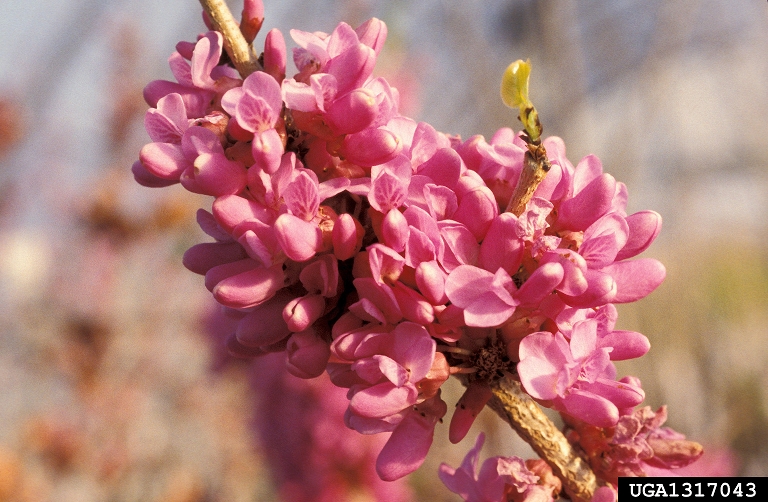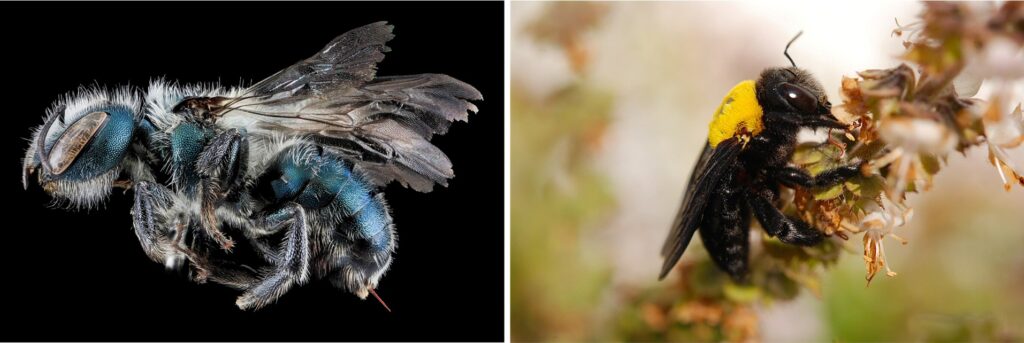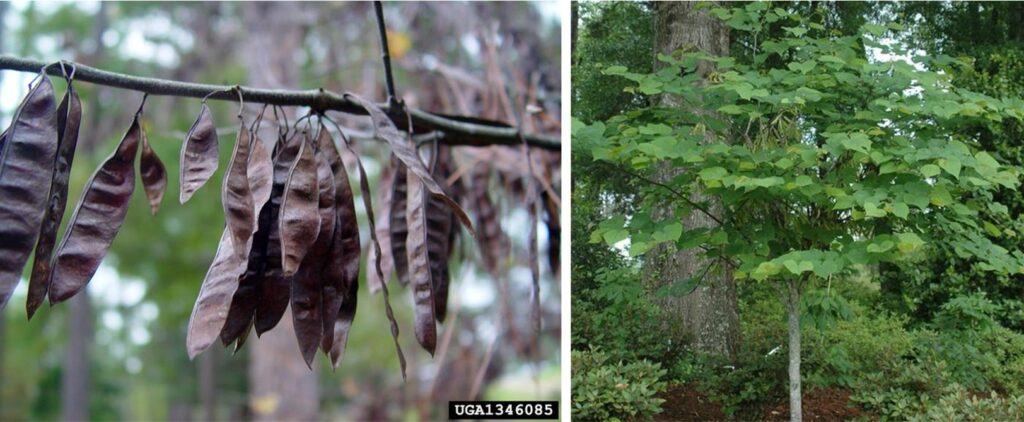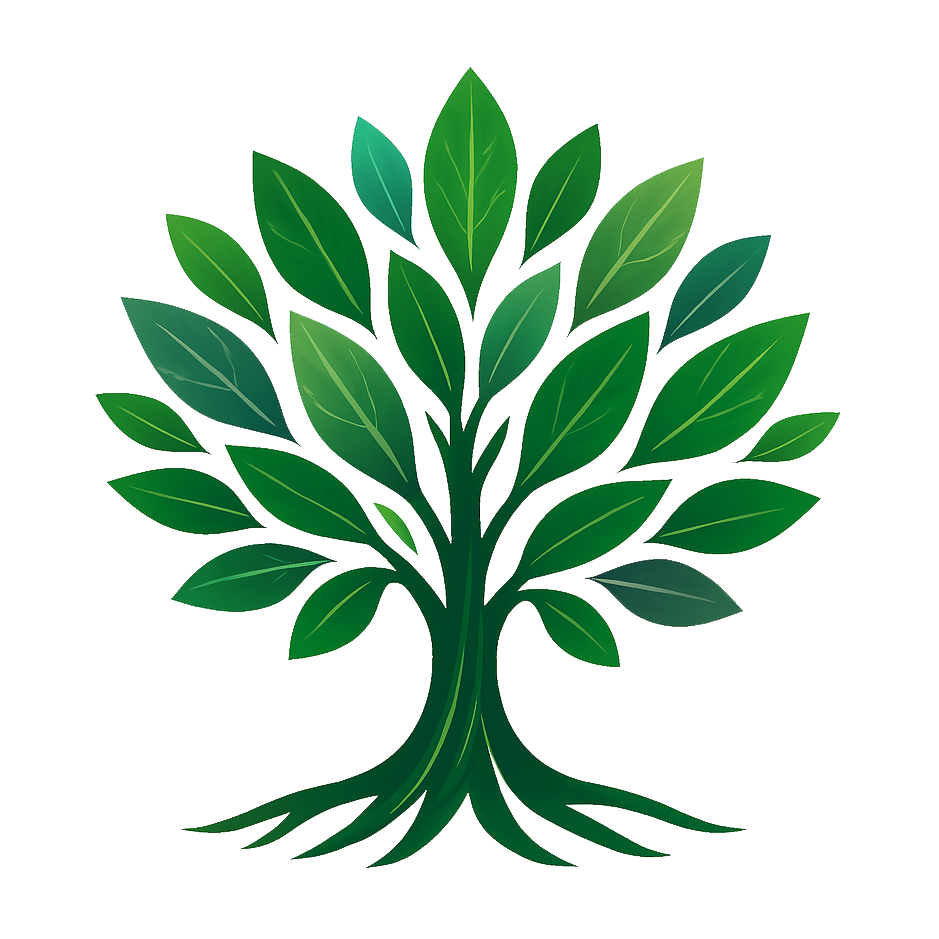
At a glance:
- Soil needs: Not overly picky about pH, but prefers over 6.5. Tolerant of clay but prefers loam. Likes moist, well-drained soil — does not thrive in poorly-aerated or flooding soils.
- Water needs: Drought-tolerant when established, but prefers consistent moisture (water about once per week, especially within the first few years).
- Sun needs: Full sun to partial shade. Best blooms occur when in full sun.
- Size needs: Small to medium. Typical full size is about 30 ft tall with a spread of about 35 ft.
- Growth rate: When young, grow very fast (up to 4 to 6 feet per year). Slows down to a moderate speed after the first few years.
- Tolerates Black Walnut: Yes, this tree can be planted near Black Walnut.
- Wildlife value: Medium to high. Host to several species of moths and butterflies, and also provides nectar that only native long-tongued bees can reach.
A bit more…
Despite the fact that I’ve only rated this “medium to high” for wildlife value, the eastern redbud (Ceris canadensis) is still one of my absolute favorite trees. We will never win at this rewilding thing if we don’t lean full-steam-ahead into the things that make people happy. And eastern redbud makes me happy. It is just so beautiful. It seems to bloom at exactly the right time. There is a huge chorus of trees that blooms at the first hint of spring: think pears, cherries, magnolias. But then there is a bit of a lull (among the highly-descript blooming trees, at least). Enter the redbud, in all its bright pink glory. And it blooms for a long time, too! Without a redbud in the landscape, the transition is too fast from “yay, spring is here!” to tapping your foot on the ground, waiting for something else colorful to show up. But redbuds smooth it out, occupying that gap in its entirety (Dogwoods occupy that gap in my opinion too, but only partially, as they don’t bloom for as long).

And it’s not only the spring blooms that make them beautiful. They often have a very stunning shape as well. Their trunks and branches are prone to many twists and turns, making them seem almost like a full-sized bonsai specimen. They don’t get huge, so are a great understory or mid-story tree, and their unique shape helps them add significant intrigue to this layer — which can often be in need of intrigue! The leaves are also very captivating as they begin to emerge. At first they emerge red, and then slowly grow larger and turn green, as new leaves continue to emerge. The result can almost look like a fractal or optical illusion. To some people, it almost makes the tree seem “blurry” when looked at from a distance. This, along with their notable heart-shaped leaves, make them easy to identify year-round (except maybe winter).

I also do not mean to imply that they are a slouch, ecologically, by focusing on their beauty and rating them “only” a medium-high for wildlife value. They are a true native and very worthwhile to have in the landscape. Their flowers are very deep, and thus rely on long-tongued bees for pollination. These are precisely the native bees which need our help, such as carpenter bees and blueberry bees, to name a few. Cercis canadensis also supports many species of moths and butterflies too — some exclusively (such as the redbud leaffolder, Fascista cercerisella), and some non-exclusive stunning ones, such as the Io moth (Automeris io) and the white flannel moth (Norape ovina).


The redbud is also more than merely an option for a native tree — it can be an active participant in your rewilding efforts! It is a prolific seeder. These trees are absolutely covered in seed pods come fall. And critters like squirrels and chipmunks love to eat them — and love to spread them! They are vigorous re-seeders, and you will end up with a lot more of these populating your grounds. (Only if you wish. They are very easy to control if you don’t want more of them). They are also members of the family Fabaceae, which means they are nitrogen fixers and will make your soil more rich and nutritious, helping other nearby plants grow faster too. Oh, and one other fun fact: both the seeds and the flowers are edible. Flowers are sometimes boiled, picked, fried, or eaten raw. Seeds are often roasted.

